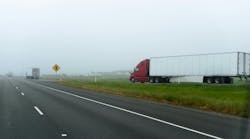Trucking faces an alphabet soup of existing or upcoming regulations, many centered around vehicle emissions. Historically, emissions regulations have been focused at the manufacturing level. However, California’s Advanced Clean Fleets regulation requires fleets to reduce emissions by phasing in the use of zero-emission vehicles. Compliance requirements differ based on the type of vehicle.
The ACF is not the only regulation that mandates emission reductions, nor is California the only state focused on the decarbonization of transportation. The rules and regulations are technical, and it can be difficult for fleets to sort through them to determine precisely which sections apply to them and what steps they need to take to comply.
A fleet should not attempt to navigate the world of emission reduction legislation alone. This is one of those instances where collaboration and partnerships make sense.
A good source of information is the National Private Truck Council, and attending the annual meeting is a good way to tap into best practices from other fleets. NPTC members also have access to the latest information on legal and compliance issues as well as federal and state regulations.
NPTC can also serve as a resource for fleet advocacy. In addition, the association publishes the monthly NPTC Washington Report, which provides the latest update on key legislation and regulatory compliance issues that concern private fleets. NPTC’s Legislative and Regulatory Advisory Committee has a monthly teleconference open to all members.
See also: How regulations affect the EV transition
Furthermore, your core suppliers are great resources because they can draw on the collective experience of their customers to share best practices, provide clarification, or offer helpful information on pitfalls and how to avoid them.
The best collaborations and partnerships are built on transparency and openness. It is important that partners share information with each other to arrive at the optimal solution. Each fleet operates differently, and given the complexity of the emissions regulations, the path to complying is fleet-specific based on duty cycles and other factors.
While fleets can navigate the regulatory environment alone, collaborating with key partners reduces hassles and will likely result in better decision-making.
Gino Fontana, CTP, is COO and EVP at Transervice Logistics Inc. Before this, he was VP of operations at Berkeley Division and Puerto Rico. He has more than 35 years of experience in the transportation and logistics industry, with both operational and sales experience.



